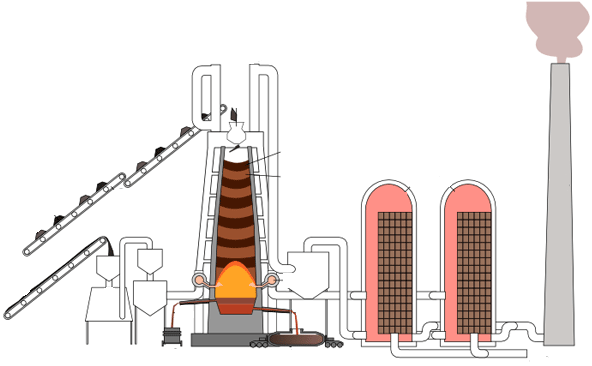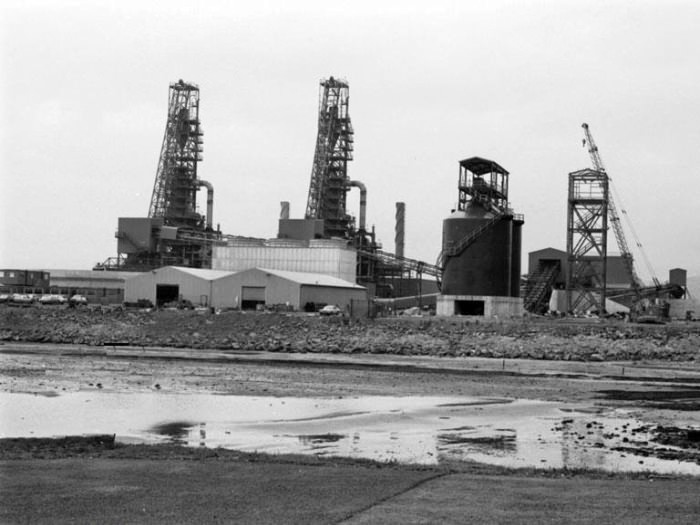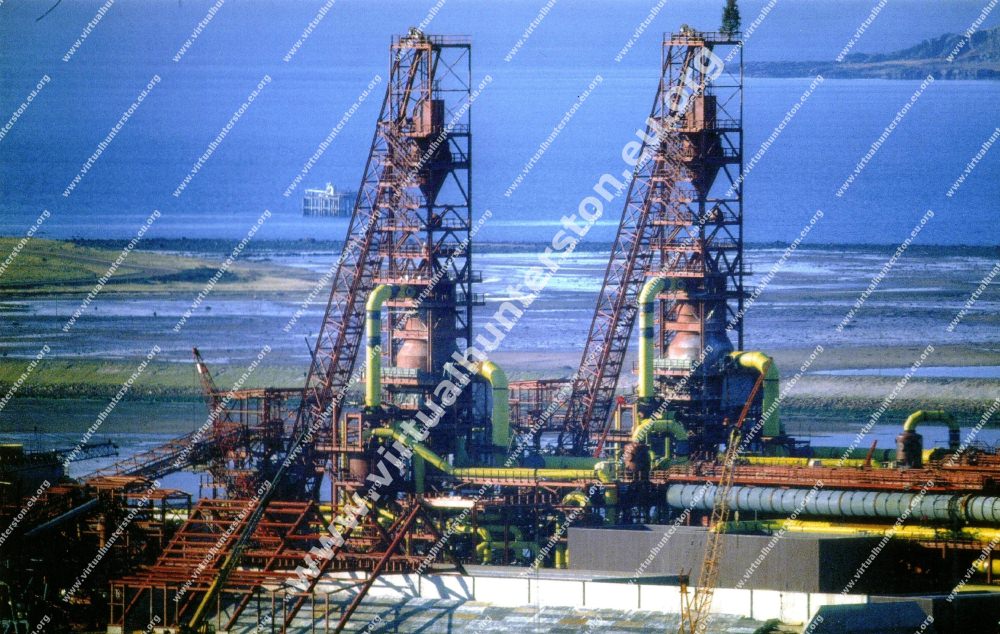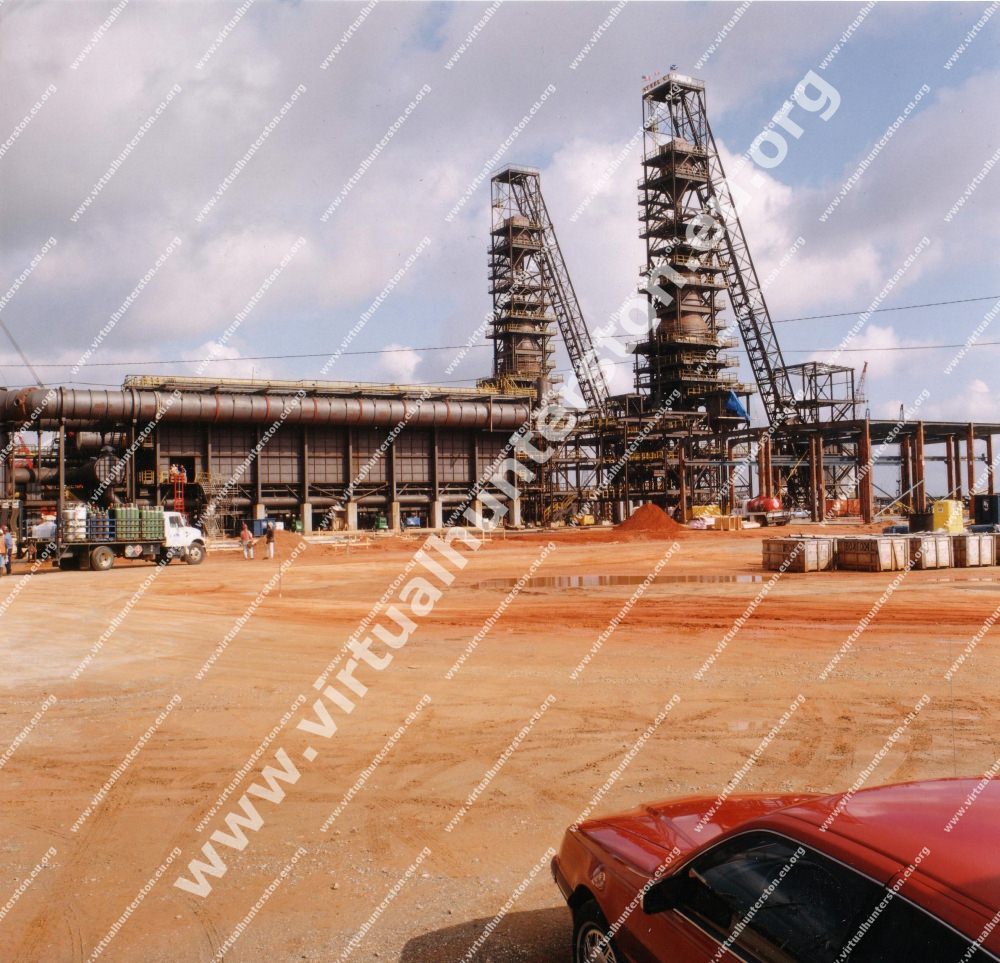



Two Midrex direct reduction plants each with a capacity of 400,000 tonnes per year of reduced iron was located on a 35 acre site which was reclaimed from the sea. They were the first such plants in the UK.
Iron oxide pellets and lump ore for the direct reduction process would have been stored in a separate area of the main stockyard. The direct reduction plants had its own railway track that linked to the main line for dispatch of the end product.
The direct reduction furnace units were in the form of refractory lined vertical shafts with an overall height of 65 meters (213 feet). Reducing gas consisting mainly of hydrogen and carbon monoxide at around 800c would have been used in the direct reduction process to remove oxygen from the ore and increase its iron content by over 30% to about 93%. The reducing gas would have been produced by reacting natural gas from the North sea with carbon dioxide and steam over a nickel based catalyst at elevated temperature in the reformer unit. Extensive heat recovery systems were incorporated to improve efficiency of the process.
The metalised product would have been discharged from the furnace at 50c . I would then have been screened before being conveyed to the passivation hall where it would have been stored for 36 hours. This allowed the material to weather in a moist free atmosphere and build up a protective skin to reduce its tendency to re-oxidize.
From there the material would have been conveyed to storage bins where it would have been weighed before loaded into specially designed hopper rail wagons fro distribution throughout the United Kingdom.
Although the plants were built they were never used. They were abandoned after being built and it lay disused for over 20 years. In 1994 the plants were sold, dismantled and shipped off to America but in 2005 they were sold again, dismantled and sent to Saudi Arabia.
Iron oxide pellets and lump ore for the direct reduction process would have been stored in a separate area of the main stockyard. The direct reduction plants had its own railway track that linked to the main line for dispatch of the end product.
The direct reduction furnace units were in the form of refractory lined vertical shafts with an overall height of 65 meters (213 feet). Reducing gas consisting mainly of hydrogen and carbon monoxide at around 800c would have been used in the direct reduction process to remove oxygen from the ore and increase its iron content by over 30% to about 93%. The reducing gas would have been produced by reacting natural gas from the North sea with carbon dioxide and steam over a nickel based catalyst at elevated temperature in the reformer unit. Extensive heat recovery systems were incorporated to improve efficiency of the process.
The metalised product would have been discharged from the furnace at 50c . I would then have been screened before being conveyed to the passivation hall where it would have been stored for 36 hours. This allowed the material to weather in a moist free atmosphere and build up a protective skin to reduce its tendency to re-oxidize.
From there the material would have been conveyed to storage bins where it would have been weighed before loaded into specially designed hopper rail wagons fro distribution throughout the United Kingdom.
Although the plants were built they were never used. They were abandoned after being built and it lay disused for over 20 years. In 1994 the plants were sold, dismantled and shipped off to America but in 2005 they were sold again, dismantled and sent to Saudi Arabia.



Midrex Direct Reduction Plant at Hunterston


